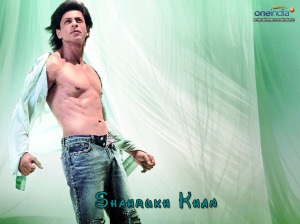
Gestures that speak
Having sat through endless interviews for print and TV, Shabana Azmi is not, apparently, in the best of tempers. So it is with some trepidation that one asks if her play, Broken Images — to perform which she was in Kolkata recently at the behest of Seagrams Black Dog, Sanskriti Sagar, and Weaver’s Studio Centre for the Arts — has anything to do with the way in which she views her life and career.
She pauses over the question, and her famous temper is, for the moment, kept at bay. Instead of answering directly, however, Azmi speaks of moments that are apparently random, and yet have a lot to do with the way she has evolved as a performing artiste.
One of the most recent is an incident that happened in Rohtak, where she was staging Broken Images. Originally written in Kannada by Girish Karnad as Odakalu Bimba, the play became Bikhre Bimb in Hindi and Broken Images in English, directed by Alyque Padamsee. “There I was in Rohtak, with an audience of about 1,800 people, when the organiser pointed out, minutes before the start, that only about 20 per cent of them spoke English, so could I please do the play in Hindi?” she says. “I was so astounded I didn’t know what to do, though I did feel like whacking him!”
Nonetheless, the actress prevailed over the nervous-as-hell woman, and she did do the play in Hindi, translating her lines on the spot as she went along. “See, I’m getting goose bumps even now when I think about how I did it,” she says, holding out her arm. “Actually, I must tell Girish this, and I don’t know if I can repeat it, ever. When I told Javed (husband Javed Akhtar) about it, he was thrilled!”
Indeed, such courage — or desperation — she says, is what defines an actor. “You put everything you feel through a sieve: your heart, mind, body, and then come up with a particular moment.”
Not all those moments can be captured, though. Take the classic scene in Goutam Ghose’s Paar (1984), which required Azmi and co-star Naseeruddin Shah to swim across the Ganga with a herd of pigs. “Naseer was not a good swimmer, so he was nervous to begin with. And the swineherd was about 90 and looked like he would collapse any minute. To top it all, one of the pigs died right at the very beginning of the shot, in front of our eyes,” she says.
Amidst the madness, Azmi was required to place her chin on the rump of one of the pigs, which she actually managed, but none of the three cameras aimed at the shot managed to catch it. “An actor’s life is full of such images, which is why it holds a certain random quality,” she muses.
Having mentioned Shirley Maclaine once during the conversation in the context of acting, she may well quote the great actress to sum up: “I think of life itself now as a wonderful play that I’ve written for myself, and so my purpose is to have the utmost fun playing my part.”
This article was first published in Hindustan Times on September 12, 2010



